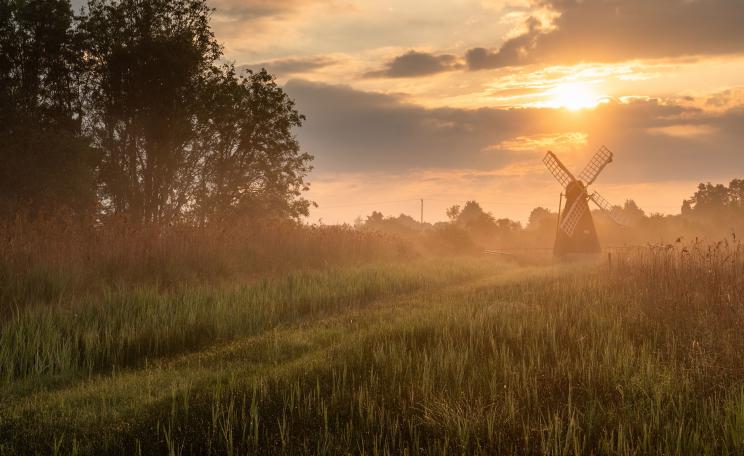The December temperatures in Australia are extreme at the moment, but they are what we expect to happen on average in a world of nearly 3C of global warming.
It is "common sense" that climate change increased the risk of the extreme wildfires seen in recent weeks in Australia, a UK expert has said.
Professor Richard Betts, of the Met Office Hadley Centre, was speaking as a comprehensive science review carried out in light of the devastating blazes confirmed that climate change increases the risk of wildfires.
An assessment of all 57 peer-reviewed papers on climate and wildfires published since 2013 shows that every one found links between global warming and an increase in the frequency or severity of "fire weather".
Rising global temperatures and more frequent heatwaves and droughts are boosting these "fire weather" periods of high temperatures, low humidity and rainfall and often high winds that lead to a high fire risk.
Temperatures
Lead author of the review Dr Matthew Jones, from the University of East Anglia (UEA), said: "Overall, the 57 papers reviewed clearly show human-induced warming has already led to a global increase in the frequency and severity of fire weather, increasing the risks of wildfire."
The impacts of climate change driven by humans on fire weather extremes and the length of fire seasons have already been seen above and beyond the natural variability of weather in areas such as the Mediterranean and Scandinavia.
It is hard to pick out an increased fire risk in the UK yet, but scientists do expect it to worsen in the future, Prof Betts said.
In Australia, the impacts of climate change outside natural variability are also less clear, according to the papers, which were all published before the recent destructive fires.
But Australia has had a record hot and dry year, while overall temperatures have warmed more quickly than the global average and are now 1.4C warmer than in pre-industrial times.
Fires
After fires in Victoria in 2009 saw the highest ratings in the country's McArthur Forest Fire Danger Index exceeded, the index was revised to add a category of "catastrophic" - with some blazes this fire season reaching that level.
Research into the latest blazes is already under way, but, ahead of those findings, Prof Betts said: "From understanding and common sense, we can say that a warmer climate due to human influence has contributed."
He said a calculation using the McArthur Index to look at the current conditions and take away 1.4C of temperature would show that the risk index would be lower.
"Just from general understanding we can be confident there's a noticeable impact. It's common sense really."
And he said that if global warming continued, the conditions which raise the risk of fires will become more severe.
Impacts
The world has already experienced 1C of warming and is currently on track for around temperatures around 3C above pre-industrial levels by 2100.
"The conditions in December, the December temperatures in Australia are extreme at the moment, but they are what we expect to happen on average in a world of nearly 3C of global warming. It tells us what that future might look like. It really brings it home to you what that level of climate change really means."
Professor Corinne Le Quere, from the University of East Anglia, said: "These are the impacts we are seeing from 1C of global climate change.
"The impacts will get worse as long as we do not what it takes to stabilise the world's climate, and what it takes is to take carbon dioxide and other long-lived greenhouse gases to net-zero emissions. It's not a new normal, it's a transition to a world of more impacts."
The review was carried out using the new ScienceBrief online platform, set up by UEA and the Tyndall Centre for Climate Change Research, with scientists from UEA, Met Office Hadley Centre, University of Exeter and Imperial College London carrying out the assessment.
This Author
Emily Beament is the PA environment correspondent.







